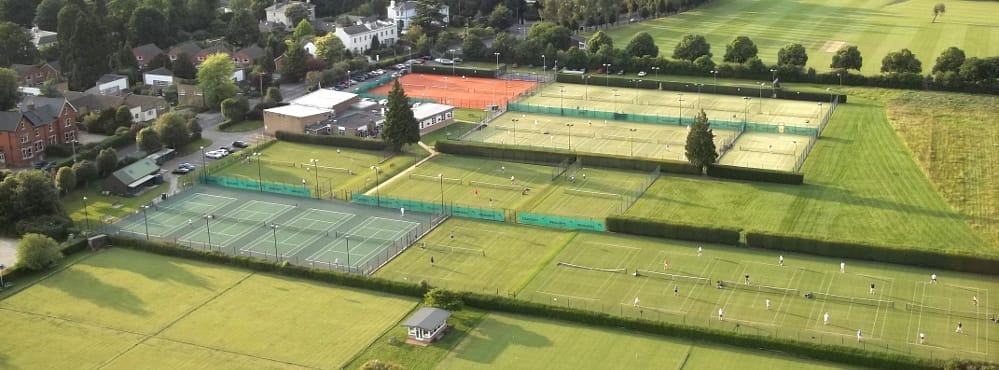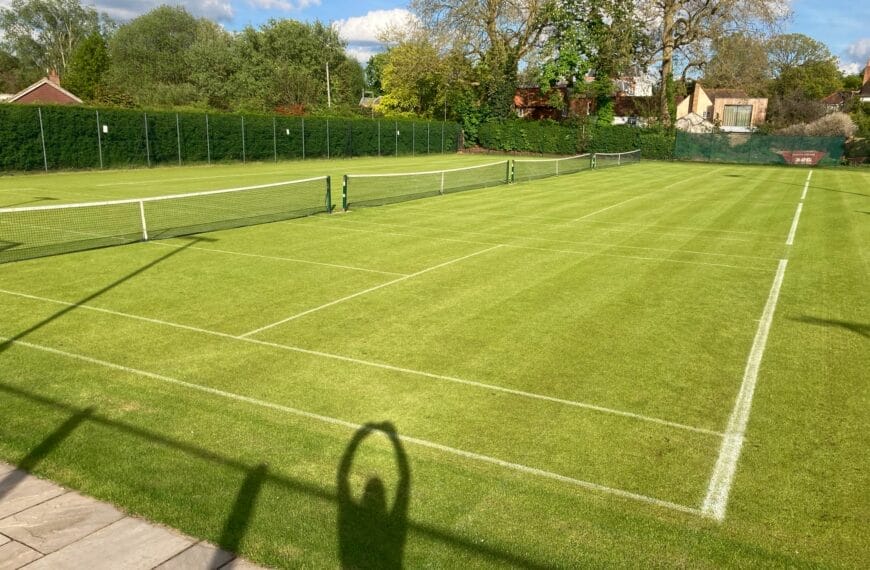Tennis is a sport enjoyed by millions worldwide, and the surface on which the game is played can significantly impact the quality of play. Grass courts, known for their fast and low-bouncing surface, require meticulous maintenance to ensure optimal playability. In this guide, we will explore the intricacies of grass court maintenance, covering everything from mowing and irrigation to weed control and environmental adaptations.
Learn about Maintaining Grass Courts
- Grass court maintenance is essential for optimal playability.
- Learn about mowing, irrigation, fertilization, weed control, aeration, pest management, court appearance, rest periods, consulting with experts, environmental adaptations, and equipment maintenance.
- The article provides insights into the importance and benefits of proper maintenance, along with practical strategies and techniques for maintaining grass tennis courts.

Understanding Grass Court Maintenance
Grass court maintenance is crucial for the longevity and playability of tennis courts. It not only enhances the aesthetic appeal but also contributes to player safety and performance. Groundskeepers and tennis enthusiasts can work together to create an optimal playing environment by understanding the key maintenance aspects.
Importance and Benefits of Proper Grass Court Maintenance
Maintaining grass courts is crucial for preserving their integrity and playability. It helps prevent surface irregularities that can affect the speed and bounce of the ball, ultimately influencing match outcomes. Additionally, well-maintained courts reduce the risk of player injuries.
Key Maintenance Aspects
Grass court maintenance encompasses activities such as mowing, irrigation, fertilisation, weed control, aeration, and pest management. Each aspect plays a vital role in sustaining the health and performance of the courts.

Mowing for Optimal Play
Mowing is fundamental to grass court maintenance, directly influencing playability and aesthetics. The height at which the grass is maintained significantly impacts the speed and ball behaviour on the court, making it crucial to implement appropriate mowing practices.
Determining the Ideal Grass Height for Tennis Courts
The ideal grass height for tennis courts typically ranges between 8 to 10 millimetres, with variations based on court usage and environmental conditions. Maintaining the grass at the optimal height ensures a consistent and predictable playing surface, contributing to the overall quality of play.
Factors Affecting Mowing Frequency
The frequency of mowing is influenced by grass growth rate, weather conditions, and court usage. High-traffic courts may require more frequent mowing to uphold the desired grass height and playing characteristics.
Equipment and Techniques for Mowing Grass Tennis Courts
Professional-grade mowers and precision cutting techniques are essential for achieving the desired grass height and uniformity. Implementing a patterned mowing approach can further enhance the visual appeal of the courts while promoting healthy grass growth.
Let’s explore irrigation systems and watering practices for grass tennis courts.
| Aspect | Details |
|---|---|
| Grass Height | 8 to 10 millimetres |
| Factors Affecting Mowing Frequency | Grass growth rate, weather conditions, grass court usage |
| Equipment and Techniques | Professional-grade mowers and precision cutting techniques; patterned mowing approach |
Irrigation Systems and Watering Practices
Effective irrigation is paramount for sustaining healthy grass growth and playability on tennis courts. Designing and implementing well-structured irrigation systems can significantly contribute to the overall maintenance of grass courts.
Designing Effective Irrigation Systems for Grass Tennis Courts
Tailoring irrigation systems to the specific needs of grass tennis courts is essential for ensuring adequate moisture levels and preventing dry patches. Factors such as water distribution uniformity and scheduling play a crucial role in maintaining optimal soil moisture.
Best Practices for Watering Grass Tennis Courts
Watering practices should align with the court’s requirements, considering factors like evapotranspiration rates and soil composition. Deep, infrequent watering is commonly recommended to encourage deep root growth and drought resistance in grass.
The Importance of Aeration
Making the Grass Breathe
Despite regular mowing and watering, grass can seem lacklustre and patchy. Seek advice from a turf management expert on the importance of aeration in grass court maintenance.
Aeration involves perforating the soil with small holes to allow air, water, and nutrients to penetrate the grassroots. This process helps alleviate soil compaction and promotes healthy root growth, leading to lusher and more resilient grass.
Using a core aerator to pull out plugs of soil at regular intervals across the court is essential. Implement a regular aeration schedule to see quick results. Grass will become visibly healthier, with improved drainage and better absorption of water and nutrients.
It’s not just about cutting and watering the grass; it’s about ensuring that the grass can breathe and thrive, ultimately enhancing the playability and aesthetics of the tennis court.
Prevent Waterlogging. Ensure Adequate Moisture Levels
Balancing irrigation to avoid waterlogging while maintaining adequate moisture levels is delicate. Proper drainage systems and moisture monitoring tools can help prevent water-related issues and preserve the courts’ playability.
Grass tennis court maintenance involves a multifaceted approach that requires attention to detail and adherence to best practices. Let’s delve further into the critical aspect of fertilisation and nutrient management.

Fertilisation and Nutrient Management
Grass courts demand appropriate nutrient levels to support healthy growth and recovery from wear and tear. Understanding the nuances of fertilisation and nutrient management is pivotal for sustaining the playing surface’s lush green appearance and resilience.
Grass Nutrient Requirements
Grass tennis courts have specific nutrient requirements that vary based on factors such as soil composition and court usage. Conducting soil tests and analysing nutrient deficiencies are essential steps in formulating a tailored fertilisation plan.
Types of Fertilisers Suitable for Grass Tennis Courts
Choosing the right fertilisers, including balanced NPK formulations and micronutrient-rich products, can promote vigorous grass growth and colour. Slow-release fertilisers are often preferred for their sustained nutrient availability and minimised risk of leaching.
Frequency and Application Techniques for Fertilisation
The frequency of fertilisation applications and the methods of distribution are critical considerations. Properly timed and evenly distributed fertilisation encourages consistent grass growth and aids in the recovery of heavily used areas.
In addition to mowing, irrigation, and fertilisation, weed control is another essential aspect of grass court maintenance. Let\’s explore effective strategies for managing weeds on grass tennis courts.
Continue reading about weed control strategies on grass tennis courts.
Questions and Answers
How are grass courts maintained?
Grass courts are maintained by regular mowing, aeration, fertilisation, and watering to keep the grass healthy and resilient.
Who can maintain grass courts?
Homeowners or professional gardeners can maintain grass courts using proper tools and techniques for mowing, watering, and maintenance.
What tools are needed to maintain grass courts?
Tools needed to maintain grass courts include a quality lawn mower, aeration tools, fertilisers, and irrigation equipment for watering.
How often should grass courts be mowed?
Grass courts should be mowed regularly, typically once a week, to maintain an optimal height and promote healthy growth.
What if the grass court develops bare patches?
If bare patches develop on a grass court, overseeding with appropriate grass seed and proper watering can help restore the lawn’s fullness and health.
What if I don’t have time to maintain a grass court?
If you don’t have time to maintain a grass court, consider hiring a professional lawn care service to ensure proper and consistent maintenance.











